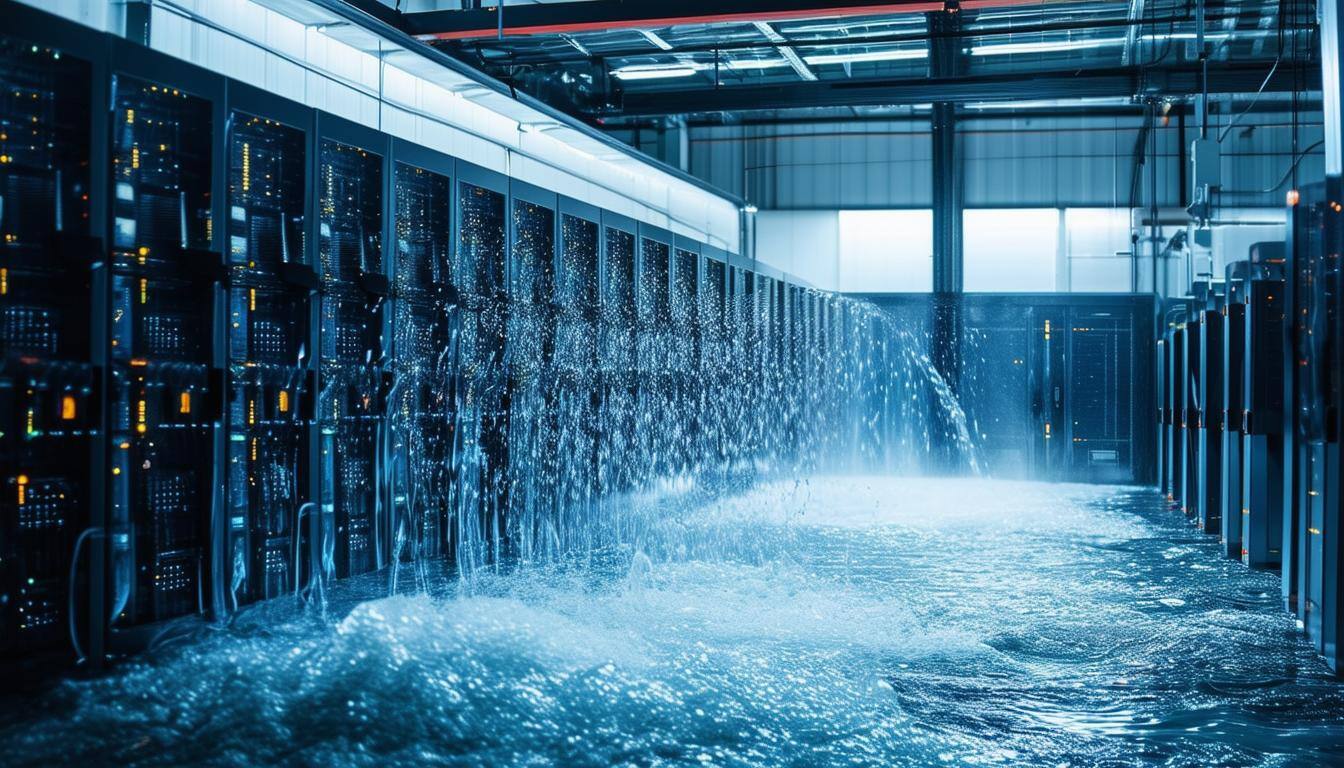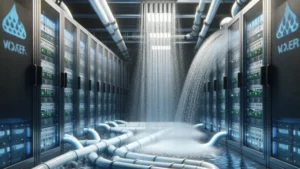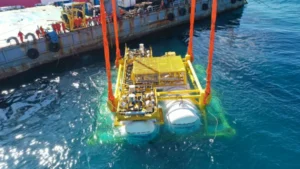AI Data Center Water Consumption: Balancing Growth, Sustainability, and Innovation
Introduction
Artificial Intelligence (AI) is rapidly reshaping industries, powering everything from advanced medical diagnostics to autonomous vehicles, financial forecasting, and creative tools. Yet, behind the sleek user interfaces and groundbreaking capabilities lies a massive computational infrastructure: data centers. These sprawling facilities house thousands of powerful servers and require enormous amounts of electricity and cooling to function.
While much attention has been given to the carbon footprint of AI, a growing concern that is now making headlines is water consumption. AI-driven data centers consume billions of liters of water every year, primarily for cooling systems. This has sparked debates about the sustainability of AI’s growth, especially in regions already facing water scarcity.
This article explores the issue of AI data center water consumption, breaking down how data centers use water, why AI workloads intensify this demand, the environmental and societal impacts, and the innovations and policies being developed to address the challenge.
How Data Centers Use Water
To understand AI’s water footprint, it’s important to first examine how data centers operate.
-
Cooling Systems:
-
Servers generate enormous heat while running AI workloads. To prevent overheating, data centers employ cooling systems.
-
The most common method is evaporative cooling, where water is used to absorb and dissipate heat.
-
-
Humidification:
-
In some facilities, water is used to maintain optimal humidity levels to prevent static electricity buildup, which could damage sensitive hardware.
-
-
Power Generation:
-
In regions where electricity is produced from water-intensive power plants, indirect water consumption adds another layer to the equation.
-
On average, a data center uses 3–5 million gallons of water per day—about the same as a city of 30,000–50,000 people.
Why AI Makes Data Centers Thirstier
AI workloads differ significantly from traditional cloud computing tasks. Here’s why they require so much more cooling:
-
High-Intensity Training
-
Training large AI models, like GPT or image recognition systems, involves processing massive datasets over extended periods.
-
A single AI training run can use as much power as hundreds of households over a year, which translates into substantial cooling requirements.
-
-
Continuous Inference
-
Once trained, models don’t just sit idle—they are constantly queried by millions of users worldwide. This sustained workload keeps servers running at high capacity, generating more heat.
-
-
Specialized Hardware
-
GPUs (Graphics Processing Units) and TPUs (Tensor Processing Units) are optimized for AI but consume more energy and produce more heat than traditional CPUs.
-
Thus, AI data centers not only require more electricity but also more water for cooling, intensifying their environmental impact.
The Scale of the Problem
Recent studies and reports have revealed the staggering water footprint of AI:
-
Google’s Data Centers: In 2022, Google consumed over 5 billion gallons of water for data center operations, with AI being a significant driver.
-
Microsoft’s AI Training Runs: Training GPT-4 is estimated to have consumed over 700,000 liters of clean water, mainly for cooling.
-
Meta and Amazon: Both companies report water usage in billions of gallons annually, with AI growth cited as a key factor.
These numbers may not sound alarming until you consider local water stress. For example:
-
Google’s data center in The Dalles, Oregon, has faced backlash for using city water while the community struggles with drought.
-
Microsoft’s Iowa facility, crucial for OpenAI model training, relies on municipal water supplies that farmers and households depend on.
Environmental and Societal Impacts
1. Water Scarcity
In regions where water is already scarce, heavy use by AI data centers intensifies competition between industries, agriculture, and households.
2. Local Ecosystems
Large-scale water withdrawals can reduce river flows, harm aquatic life, and disrupt ecosystems.
3. Energy-Water Nexus
Water consumption is closely tied to energy generation. Water-intensive cooling systems not only stress local supplies but also require more energy to operate, creating a feedback loop.
4. Community Backlash
Local communities are increasingly pushing back against tech giants, questioning whether AI development should come at the cost of public water supplies.
Case Studies
Google in The Dalles, Oregon
-
Google faced legal battles to keep its water consumption figures private.
-
Investigations revealed that its facilities consumed over 80% of the city’s water, sparking public anger.
Microsoft in Iowa
-
During GPT-4 training, Microsoft’s data centers consumed millions of liters of water.
-
While the company has pledged to be water-positive by 2030, the immediate strain is undeniable.
Meta in Arizona
-
Meta’s data centers in Arizona, one of the driest U.S. states, consume billions of gallons annually, raising concerns about long-term sustainability.
Industry Efforts to Reduce Water Consumption
Tech companies are aware of the growing scrutiny and are experimenting with solutions:
-
Liquid Cooling
-
Instead of evaporating vast amounts of water, some companies use direct liquid cooling with non-evaporative fluids.
-
Microsoft, Google, and NVIDIA are exploring immersion cooling systems.
-
-
Air Cooling and Hybrid Systems
-
Some data centers use outside air when climate permits, reducing water reliance.
-
-
Recycled Water
-
Using “greywater” from municipal sources or treated wastewater instead of drinking water.
-
-
AI-Optimized Cooling
-
Ironically, AI itself is being used to optimize data center cooling, predicting temperature fluctuations and adjusting in real time.
-
-
Geographic Relocation
-
Companies are strategically placing new data centers in cooler climates or near abundant water sources to ease stress on vulnerable areas.
-
Government Regulations and Policy Responses
Governments worldwide are beginning to impose stricter requirements:
-
United States: Some states now require data centers to disclose water usage publicly.
-
Europe: The EU’s sustainability initiatives push companies to report environmental impacts, including water.
-
Asia: Singapore and Hong Kong are exploring water-efficient cooling technologies before approving new data centers.
The question remains: Should governments restrict water-intensive AI projects in drought-prone regions?
Balancing AI Growth with Sustainability
AI is here to stay, and its benefits are undeniable. From medical breakthroughs to climate modeling, the technology has transformative potential. Yet, unchecked resource consumption could undermine these very benefits.
The challenge lies in balancing AI innovation with ecological responsibility. This involves:
-
Transparent reporting of water and energy usage.
-
Adopting best practices in cooling and recycling.
-
Rethinking priorities, ensuring that communities don’t lose access to vital resources.
-
Encouraging global cooperation, since AI demand is global, but water resources are local.
Future Outlook
As AI adoption accelerates, the demand for data center resources will skyrocket. Some estimates suggest that by 2030, AI-related data centers could consume as much water as entire mid-sized countries.
However, innovation offers hope:
-
Breakthroughs in chip design may reduce energy and heat generation.
-
Advanced cooling systems could drastically cut water reliance.
-
AI-driven resource optimization may help data centers self-regulate.
-
Policy frameworks will ensure that sustainability is embedded in AI’s growth trajectory.
The companies that can master both AI innovation and sustainable operations will likely lead the industry in the coming decade.
Conclusion
AI is one of the most resource-intensive technologies ever developed, and data center water consumption is emerging as a critical environmental issue. While training AI models can consume millions of liters of water, the problem is not insurmountable. With the right mix of technology, transparency, and regulation, it is possible to strike a balance between progress and sustainability.
The debate around AI and water is more than just about numbers—it’s about priorities, ethics, and the future we want to build. Will we allow AI to strain already fragile ecosystems, or will we use innovation to ensure that technological progress and environmental stewardship go hand in hand?
The answer will define the legacy of AI in the decades to come.
OpenAI is launching an “AI-first” jobs platform — what that means (and why it matters)







